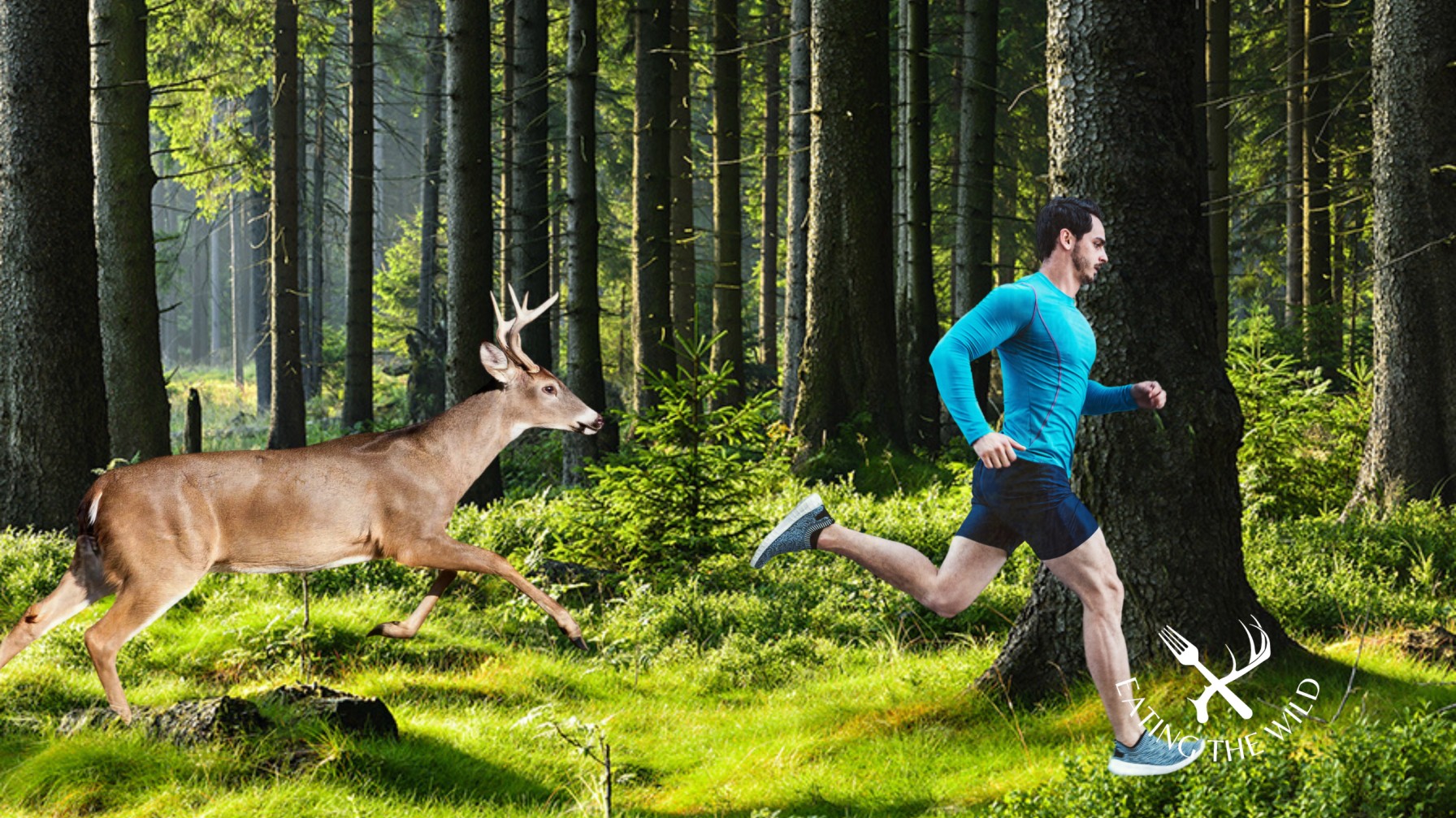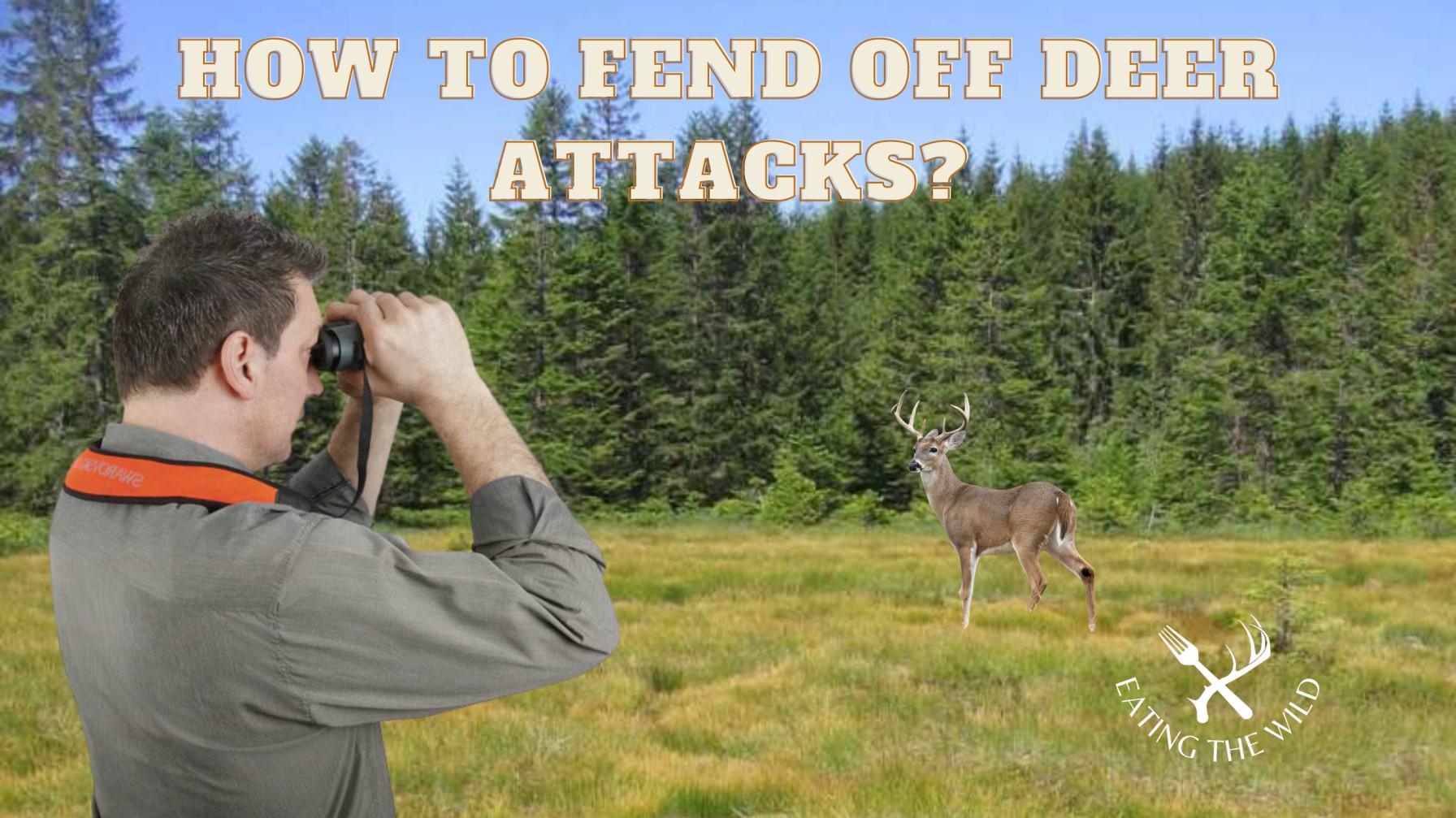
Deer, often perceived as gentle and non-threatening creatures, have been a subject of fascination for many.
However, there are instances where these seemingly docile animals have shown aggressive behavior toward humans.
In this article, we are going to check whether deer attack humans or not, and also the reasons behind such behavior.
So, without further ado, let’s get started.
Deer Attacks Are More Common Than You Might Think
Contrary to popular belief, deer attacks on humans are not as rare as one might assume.
While not frequently reported in the media, such incidents do occur, especially during specific seasons or under certain circumstances.
Deer attacks on humans are not uncommon. For instance, rutting bucks, which are in their mating phase, can become highly aggressive.
Normally, these bucks maintain a safe distance from humans, but during the rutting season, their behavior can become unpredictable, even leading them to chase after humans.
When Do Deer Attack Humans?

There can be different reasons why deer attack human beings. For example:
When Protecting Their Young:
Like many animals, deer are protective of their offspring. If they perceive a threat to their fawns, even a doe might attack.
When They Are Cornered:
A deer that feels trapped or cornered might resort to attacking as a means of defense or finding an escape route.
During The Rut (or mating season):
The rutting season, which generally occurs in the fall, is a time when bucks are on the lookout for potential mates.
Their behavior during this period can be erratic and aggressive.
What is deer rutting season?
The rutting season refers to the mating period for deer.
During this time, their behavior undergoes significant changes, becoming more aggressive as they compete for potential mates.
When is deer rutting season?
The peak rutting season for red deer, the UK’s largest native wild mammal, occurs in October. However, the exact timing can vary among different deer species, ranging from September to early November.
Rutting Bucks Can Be Violent
Rutting bucks are known for their unpredictable and sometimes violent behavior. They might destroy saplings, chase after humans, or swim across lakes to approach potential threats or mates.
Apart from the rutting season, deer might attack if they feel threatened or cornered. They might also become aggressive in an attempt to protect their young.
What to Do if a Deer Attacks You?

If you ever find yourself face-to-face with an aggressive deer, it’s essential to prioritize your safety.
Here’s a step-by-step guide on how to handle such a situation:
Stay Calm:
Panicking can escalate the situation. Take deep breaths and remain as composed as possible.
Maintain a Safe Distance:
Begin to back away slowly. Ensure you don’t turn your back on the deer, as this can make you more vulnerable.
Appear Larger:
If the deer appears to charge or show aggressive behavior, try to make yourself seem bigger. Raise your arms, stand tall, and make loud noises. This might deter the deer.
Protect Yourself:
If the deer manages to knock you down, immediately curl into a fetal position. Shield your head and vital organs with your arms and hands.
What happens during a serious deer attack?
While many deer encounters are harmless, some can escalate into serious situations. In a severe attack, a deer might:
- Knock a person to the ground.
- Attempt to use its antlers to gore.
- Stomp on the individual with its hooves.
Such aggressive encounters can lead to grave injuries and, in rare cases, fatalities.
What Injuries Can Be Sustained in a Deer Attack?
If you’re unfortunate enough to experience a deer attack, the injuries can vary in severity. Some potential injuries include:
Minor Injuries:
Scratches, bruises, or small cuts.
Moderate Injuries:
Wounds from the deer’s antlers or hooves.
Severe Injuries:
Broken bones, internal injuries, or deep gashes, especially if the deer knocks the person down or tramples them.
Surviving A Deer Attack
While the immediate reaction during an attack is crucial, there are also strategies to increase your chances of survival:
Keep a Safe Distance:
Always maintain a respectful distance from deer, especially during their mating season.
Use Barriers:
If possible, put an object between you and the deer, such as a tree or a large rock.
Climb:
If you’re near a tree and are able to climb, it might offer a safe refuge from an aggressive deer.
Fight Back if Necessary:
As a last resort, if there’s no escape, try to defend yourself. Use any available objects, like sticks or rocks, to fend off the deer.
However, the best strategy is always prevention.
Being aware of your surroundings, understanding deer behavior, and avoiding known deer habitats during their aggressive seasons can significantly reduce the risk of an attack.
What To Do When You See A Deer
Deer, with their graceful presence, often captivate those fortunate enough to spot them in the wild.
However, it’s vital to remember that these are wild creatures with instincts and behaviors that can sometimes be unpredictable. When you encounter a deer, it’s essential to maintain a respectful distance.
Avoid approaching the animal, stay quiet to prevent startling it, and avoid making direct eye contact, which the deer might perceive as a threat.
If you find yourself too close, it’s best to back away slowly, ensuring you don’t turn your back on the animal.
What to do if you find a fawn.
Finding a fawn, with its innocent appearance, can be a heartwarming experience. However, it’s crucial to approach this situation with care.
Often, mother deer leave their fawns hidden while they forage, so it’s likely the fawn isn’t abandoned. Refrain from touching the fawn, keep pets at a distance, and avoid crowding the animal.
If you genuinely believe the fawn is in danger or abandoned, it’s best to contact local wildlife officials.
How to Fend off Deer Attacks

Deer, often admired for their gentle nature and beauty, can sometimes exhibit unpredictable behavior, especially under certain circumstances.
Knowing how to handle potential deer encounters is crucial for both your safety and the well-being of these majestic creatures.
Stay Away From Deer During Rutting Season
The rutting season, typically occurring in the fall, is a period when male deer, or bucks, are particularly aggressive as they seek out mates.
Their heightened testosterone levels and competitive nature can make them more prone to confrontations.
During this time, it’s essential to exercise extra caution, especially if you’re in areas known for deer activity. Avoid approaching bucks, and always be aware of your surroundings.
Stay Away From Fawns
While fawns may appear harmless and vulnerable, their mothers are often nearby and can be fiercely protective.
A mother deer, or doe, might perceive humans as threats to her young, leading to potential confrontations.
If you come across a fawn, it’s best to maintain a respectful distance and avoid making any sudden movements or noises.
Prevention & Avoidance
The best strategy for ensuring safe deer encounters is prevention.
By understanding deer behavior and taking certain precautions, you can reduce the likelihood of confrontations.
Do Not Feed Wild Deer
Feeding deer can lead to them associating humans with food, increasing the chances of aggressive encounters.
Moreover, human-provided food might not be nutritionally suitable for deer and can lead to health issues.
Be Observant
Always be on the lookout for signs of deer when in their habitat. Recognizing deer tracks, and droppings, or even listening for rustling sounds can give you a heads-up about their presence.
Do Not Panic
If you do encounter a deer, it’s crucial to remain calm. Panicking can escalate the situation, making the deer more agitated.
Instead, move slowly, avoid direct eye contact, and retreat without turning your back.
Safeguarding Your Yard
For those living in areas with high deer populations, safeguarding your yard can prevent unwanted deer visits.
Consider installing deer-resistant fencing or using deer repellents. Planting deer-resistant plants can also deter them from entering your property.
Remember, a deer-proof yard not only protects your garden but also reduces the chances of close encounters.
Territorial Deer
Deer can be territorial, especially during certain seasons like the rut. Recognizing signs of an aggressive or territorial deer is crucial for your safety.
Look out for behaviors like snorting, stomping, or an aggressive posture. If you believe you’ve entered a deer’s territory, it’s best to leave the area slowly and calmly.
FAQ
Are Deer Aggressive Towards Humans?
Generally, deer are not aggressive toward humans. However, there are certain situations, such as during the rutting season or when a mother deer is protecting her fawn, where they might display aggressive behavior.
It’s essential to approach any wildlife with caution and respect.
Are Deer Friendly to Humans?
Deer are wild animals, and while they might appear docile or curious at times, it’s important not to interpret this as friendliness.
They might tolerate human presence to some extent, but it’s always best to keep a safe distance and avoid direct interaction.
What Does It Mean When a Deer Bobs Its Head?
When a deer bobs its head, it can be a sign of curiosity, alertness, or uncertainty. They might be trying to get a better view or sense of something unfamiliar. It’s a behavior that indicates the deer is actively assessing its environment.
Do deer bite?
While deer are more likely to use their hooves or antlers when displaying aggressive behavior, they can bite if they feel threatened or cornered. However, biting is not a common behavior for deer.
Are Deer Afraid of Dogs?
Generally, deer perceive dogs as potential predators and are wary of them. A deer might flee if it senses a dog nearby. However, during the rutting season or if cornered, a deer might confront or even attack a dog.
